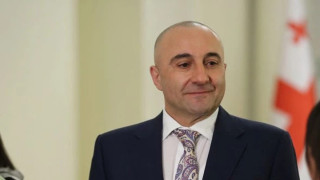Kakha Okriashvili: “The economy will grow by 4.5% in 2023 and the estimated inflation rate is 6% which means that the real economy is in the minus.”
Verdict: FactCheck concludes that Kakha Okriashvili’s statement is a FALSE.
Resume: When economic growth figures are published they show the real economic growth already adjusted to inflation if no additional information is indicated. Therefore, re-adjusting real economic growth figures to inflation is wrong.
In 2022, the nominal economic growth was 19.6% and the real economic growth was 10.1%. Therefore, it is accepted that the economy increased by 10.1% in 2022. Similarly, if the forecasted 4.5% economic growth rate holds true in 2023, it will be a real and not a nominal economic growth and, therefore, additionally adjusting it inflation is a mistake and the results will be distorted to such a great extent that the growth will be portrayed as a decline (if the inflation rate exceeds the nominal GDP growth rate).
Kakha Okriashvili’s claim that the economy will be in the minus next year is a lie considering the currently available forecasts. However, the spirit of the statement that the estimated economic growth rate is low does indeed correspond to the reality.
Therefore, FactCheck concludes that Kakha Okriashvili’s statement is FALSE.
Analysis
The leader of the Progress and Freedom party (the party joined the Strength is in Unity coalition led by the United National Movement for the 2020 parliamentary elections), Kakha Okriashvili, stated: “Today, the Asian Development Bank published Georgia’s 2023-2024 economic growth forecasts which say that the estimated growth rate in 2023 will 4.5% and it will reach 5% in 2024 if everything goes well. The estimated inflation rate for 2023 was also published and it is 6%. This means that the real economy is in the minus if adjusted for inflation! This is why people flee from Georgia and this is why this country has no prospects.”
The gross domestic product (GDP); that is, the total value of the final products and services produced within a country in one year is imperfect but it is the best instrument from the available alternatives in order to assess a country’s economic situation. The economic growth rate determines its year-to-year changes.
Inflation is very common in a contemporary market economy. In time, the purchasing power of USD, EUR, GPB or other currencies – similar to GEL – will decrease, albeit at different rates. As a result, the total value of produced products increases more as compared to the quantity of the products themselves.
The size of an economy either in a local currency or in USD is measured separately in current and basic prices, although the economic growth rate always reflects real growth. When the National Statistics Office of Georgia, the World Bank, the International Monetary Fund, the Asian Development Bank or any other international financial institution says that the economic growth in any specific year was or hypothetically will be 7%, this means that it is already adjusted for inflation and shows a real growth rate. Nominal growth can be calculated and published separately but it will definitely be underlined that it is a nominal growth.
According to the preliminary data, the real economy and the nominal economy increased by 10.1% and 19.6%, respectively, in 2022. Based on the final data, the real economy increased by 10.5% in 2021 whilst the nominal economic growth rate was 21.8%. In 2020, the GEL-calculated nominal economy remained unchanged at 49.3 billion whilst the real GDP contracted by 6.8%.
According to the Asian Development Bank’s (ADB) outlook (p. 12), Georgia’s economy will indeed grow by 4.5% and the inflation rate will be 6% in 2023. However, a 4.5% economic growth rate in this case indicates a real and not a nominal economic growth forecast.
In 2001-2022, there were only two cases when Georgia’s economy ended up in the minus – in 2009 and 2020. If Kakha Okriashvili’s method of measurement had been accurate, there would have been an economic decline in 2002, 2008, 2011, 2017 and 2022. At the same time, 2005 would have ended with a mere 0.2% growth and the record-high of 12.6% in 2007 would have been reduced to 3.4%.
Table 1: Inflation and GDP Growth Rate

Source: World Bank
Based on who makes an assessment and the period which is taken for measurement, one and the same figure can be calculated differently by those in the government or the opposition. Politicians are often prone to exaggerate the achievements under their rule by portraying nominal growth as economic growth. In September 2020, Irakli Kobakhidze, who was the Executive Secretary of the Georgian Dream party at that time, stated that Georgia’s economy increased by 40% whilst the real growth was 16% in 2017-2019. Similarly, former President Mikheil Saakashvili stated in November 2018 that Georgia’s economy increased fourfold by 400% under the United National Movement’s rule (2004-2012). In fact, Georgia’s economy increased by 71% in 2004-2012 and the 300% growth was only in current prices and calculated in USD.
Kakha Okriashvili forecasted the real economic growth rate re-adjusted to the inflation rate which completely altered the result and turned a potential 4.5% economic growth rate into a 1.5% economic decline. The MP also used the same erroneous approach in July 2022. Measuring the economic growth rate by such a method is totally wrong and, moreover, is detached from reality. Therefore, the claim that the economy will be in the minus next year is a lie under the currently available forecasts. However, the spirit of the statement itself that the expected economic growth rate is low does indeed correspond to the reality.
Therefore, FactCheck concludes that Kakha Okriashvili’s statement is FALSE.








